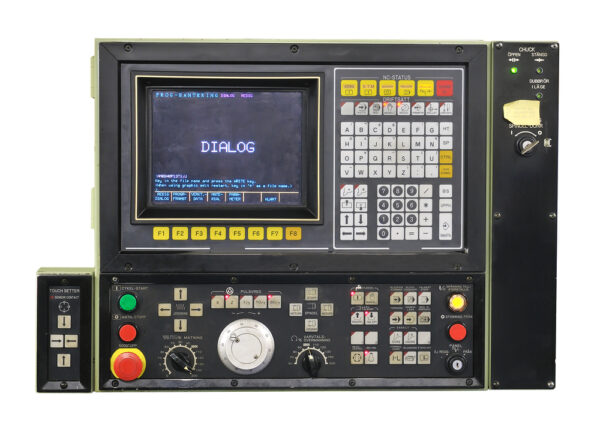5 Reasons Your HMI Touchscreen May Be Suddenly Unresponsive

One moment, your HMI touchscreen works flawlessly. The next, it’s completely unresponsive — or worse, registering phantom touches and refusing to cooperate. When an HMI screen stops working, the problem isn’t always obvious. It could be a simple calibration issue, or it could signal a deeper hardware failure. Before assuming the worst, check these five common culprits.
1. Loose connections are cutting off power or data flow
Touchscreens rely on steady connections, but cables can loosen over time. A partially seated connector can make the screen seem dead, even if the HMI itself is powered on. Physical movement, temperature fluctuations, or recent maintenance work can all cause minor disconnections.
How to fix it
- Reseat all ribbon cables and connectors to ensure a firm connection.
- Check for signs of wear, corrosion, or bent pins.
- If possible, swap in a known-working cable to rule out wiring issues.
2. The digitizer is failing or damaged
If the screen lights up but won’t register input — or only responds in certain areas — the digitizer may be the issue. The digitizer sits behind the display, detecting touch input and translating it into action. When it malfunctions, input becomes erratic or stops altogether.
How to fix it
- Test different sections of the screen to see if touch sensitivity varies.
- Try an external mouse or keyboard to confirm whether the issue is with the touchscreen or the HMI itself.
- Look for cracks, scratches, or internal damage that could affect responsiveness.
3. Calibration is off, making inputs inaccurate
Sometimes, the screen still works — but not where you expect. If touches register in the wrong location, the calibration may be misaligned. This often happens after a power cycle, firmware update, or prolonged use.
How to fix it
- Access the system settings and locate the touchscreen calibration tool.
- Follow on-screen prompts to realign touch input.
- If recalibration doesn’t work, check for firmware conflicts or digitizer wear.

4. Electrical interference is disrupting touch signals
HMI touchscreens operate in environments filled with electrical noise. Nearby variable frequency drives (VFDs), poorly shielded wiring, or grounding issues can interfere with the touchscreen’s performance. Electrical interference is difficult to spot, so take the time to troubleshoot using the right equipment.
How to fix it
- Keep HMI cables away from high-voltage power lines and motor drives.
- Verify proper grounding and shielding to prevent signal noise.
- If erratic behavior only happens when certain equipment runs, investigate electromagnetic interference.
5. The HMI software or firmware is corrupted
Software conflicts can cause a touchscreen to freeze, stop responding, or fail to recognize input entirely. If the HMI stopped working after an update or system reboot, software corruption might be the issue. Remember to only push upgrades that are verified and validated by an OEM!
How to fix it
- Restart the HMI and observe whether the issue persists.
- Reload the firmware or revert to a previous stable version.
- If all else fails, reinstall the control system software.
When troubleshooting isn’t enough, repair is the next step
If these fixes don’t restore touchscreen functionality, the problem may be deeper — like a failing power supply, a degraded display, or a failing processor. Rather than replacing the entire HMI, professional repair services can diagnose and fix the issue at a fraction of the cost.
No matter what you’re up against, GES is here to help. Now through the end of the month, we’re offering 10% OFF single repairs or 15% OFF 3+ repairs on Siemens products, including HMI units. Don’t let HMI issues persist — get them fixed by Manufacturing’s #1 Source for Repair, Sales & Service of Industrial Electronics!
